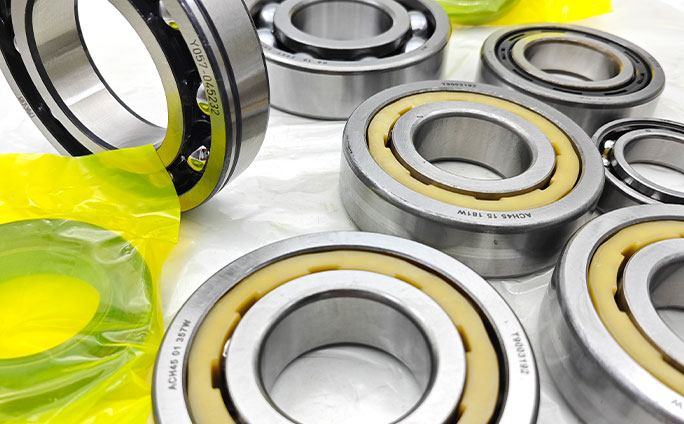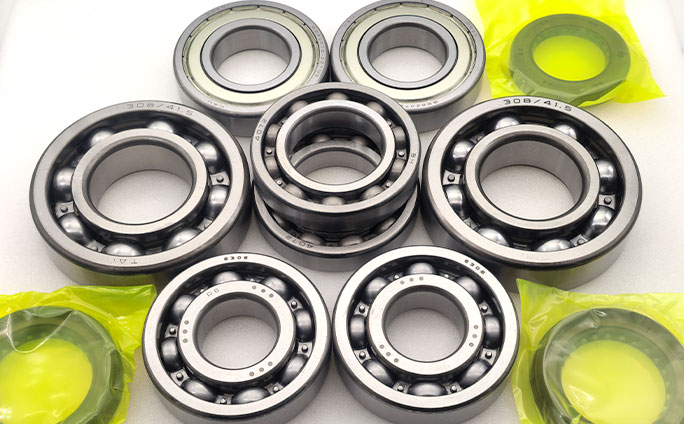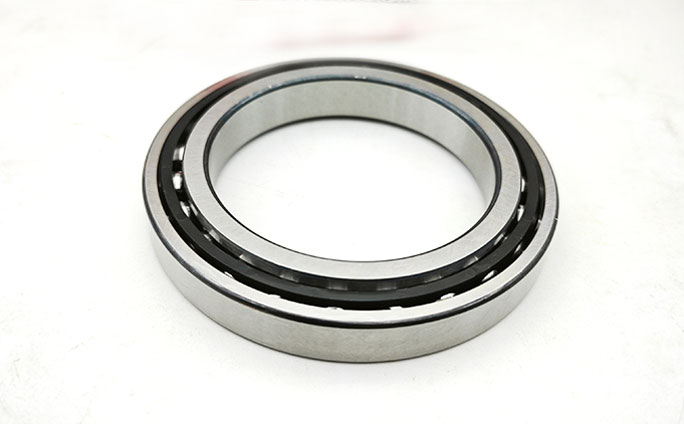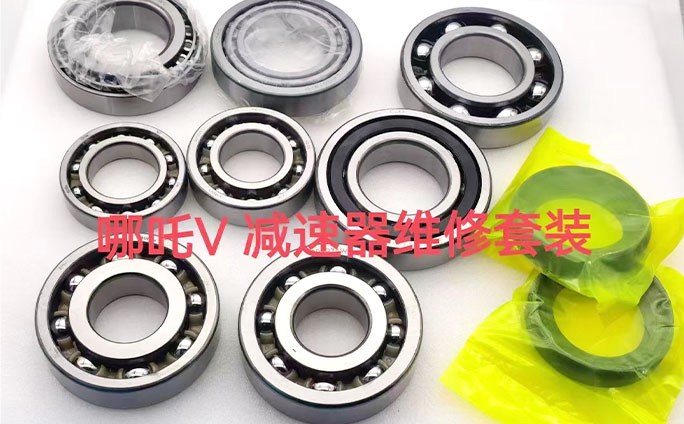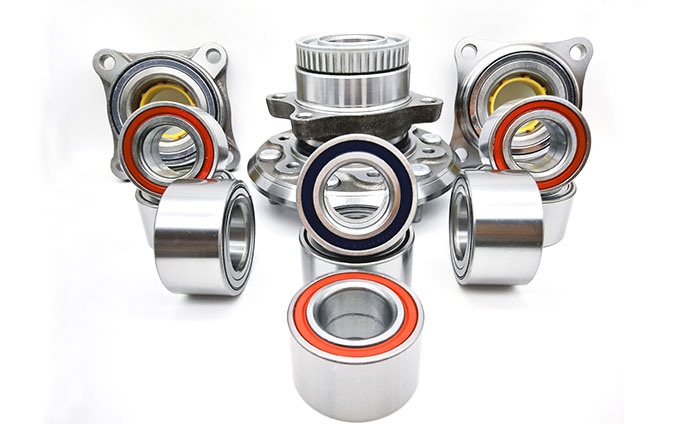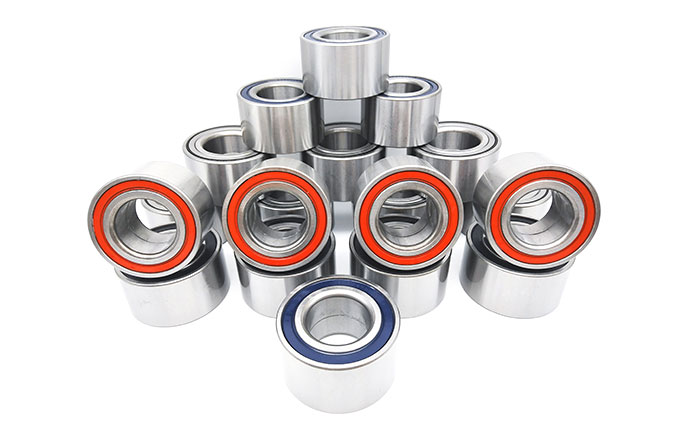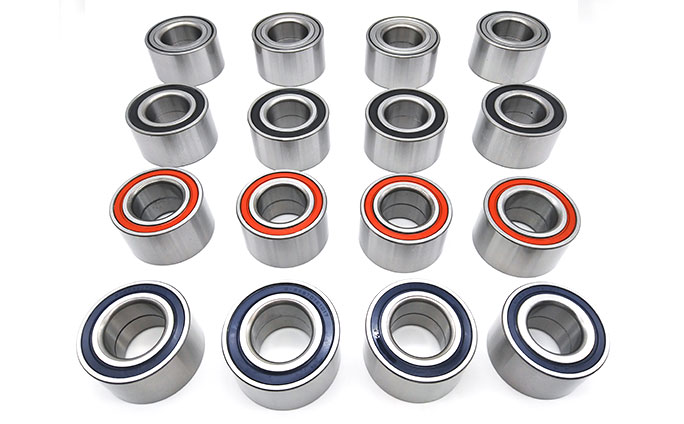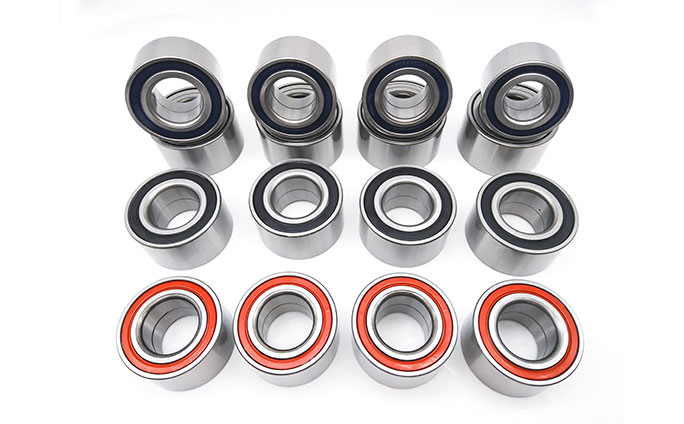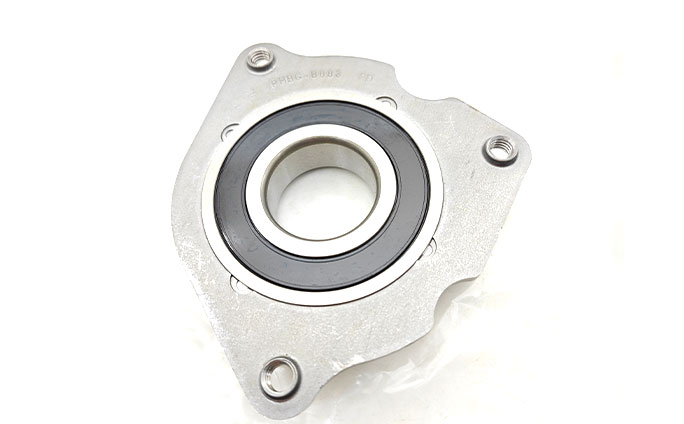The motor bearing is a key component that supports the rotation of the motor shaft. They help with power transmission and maintain precise axis alignment. To achieve optimal functionality, bearings must minimize friction and heat generation to the greatest extent possible.
High quality motor bearings are crucial for the smooth and efficient operation of motors. These specialized components need to meet the strict requirements of the motor industry for accuracy, lifespan, and reliability, with specific performance indicators usually higher than general bearing standards.
Bearing characteristics and load types
The design of bearings varies due to factors such as speed, friction, wear resistance, heat generation, and the ability to handle axial and radial loads.
Radial load: a force applied perpendicular to the axis that pushes the bearing outward.
Axial load: a force applied parallel to the shaft that pushes the bearing towards or away from the motor housing.
Types of motor bearings
The specific motor design, load conditions, working environment, and other factors will determine which bearings are used in the motor. Engineers must carefully consider these factors to ensure optimal performance and efficiency for that specific application.
Electric motors typically use two main types of bearings: ball bearings and roller bearings.
ball bearing
Ball bearings are one of the most common types of motor bearings. Their characteristic is that the steel balls rotate inside the inner and outer rings. Ball bearings are used because they have high-speed capability, low friction, and relatively low cost.
Ball bearing subtype:
Deep groove ball bearings: With a large contact area between the ball and raceway, they are suitable for high speeds and can handle moderate radial and axial loads (such as household appliances and fans).
Angular contact ball bearings: designed for axial loads and can withstand radial loads when used in pairs (such as servo motors, machine tools).
Self adjusting ball bearings: suitable for shaft misalignment, suitable for agricultural equipment and construction machinery.
roller bearing
Roller bearings use cylindrical rollers to support the shaft, making them suitable for heavy-duty and high torque applications.
Roller bearing subtype:
Cylindrical roller bearings: for handling radial loads, used in heavy-duty high-speed scenarios such as fans and pumps.
Needle roller bearing: High load compact design, suitable for automotive motors and power tools.
Conical roller bearings: handle combined radial and axial loads (such as industrial gearboxes, machine tools).
Sealed, shielded, and open motor bearings
Sealing method:
Sealed bearings: Sealed on both sides, dustproof and waterproof, maintenance free but with limited grease life.
Dust cover bearing: single-sided metal cover, can be lubricated.
Open type bearings: unsealed, requiring frequent maintenance but operating at low temperatures.
Common indicators of motor bearing faults
Excessive vibration: a signal of wear or damage.
Noise: Friction or screaming sounds indicate a malfunction.
Overheating: caused by improper lubrication or misalignment.
Stiffness or roughness: signs of bearing wear.
Bearing maintenance and lubrication
Regular inspection: visually inspect for wear and contamination.
Lubrication management: Choose the type and cycle of lubricating grease according to the manufacturer's recommendations.
Temperature monitoring: Any abnormal temperature rise detected should be promptly addressed.
Alignment control: Ensure that the alignment accuracy between the shaft and the bearing seat is ≤ 0.05mm.
Pollution prevention: Keep the environment clean and prioritize the use of sealed bearings in dusty environments.
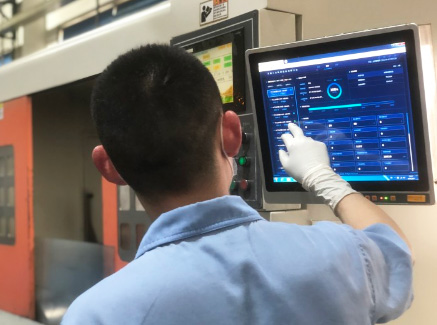 AboutThe business philosophy of "manufacturing with heart and providing sincere service" aims to repay new and old customers with exquisite technology, high-quality products, and perfect services
AboutThe business philosophy of "manufacturing with heart and providing sincere service" aims to repay new and old customers with exquisite technology, high-quality products, and perfect services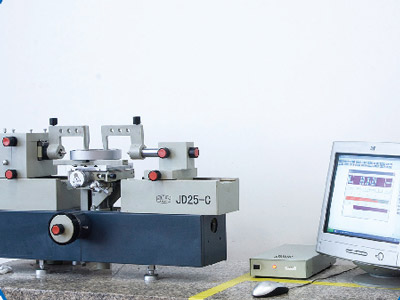 NewsElaborated development of high performance hub unit bearing, innovative design, excellent process and high-quality material selection help the vehicle drive safely.
NewsElaborated development of high performance hub unit bearing, innovative design, excellent process and high-quality material selection help the vehicle drive safely. ProductThe high-performance wheel hub unit bearings integrate advanced design and high-quality materials, injecting strong power into the safe driving of automobiles.
ProductThe high-performance wheel hub unit bearings integrate advanced design and high-quality materials, injecting strong power into the safe driving of automobiles.

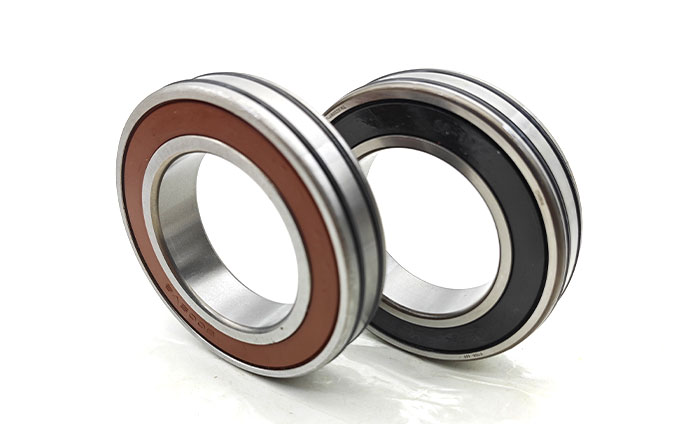
 Industry Accumulation in 8 Years
Industry Accumulation in 8 Years